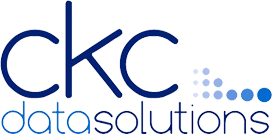Clearing Up Your Questions on Data Center Cable Management Best Practices
Data center cable management can be a daunting and complicated task, with countless cables to sort and organize. However, it’s a crucial element to ensure the smooth functioning of your data center. A well-maintained and managed cabling system can lead to enhanced productivity, reduced downtime, and efficient use of resources.
Therefore, it’s essential to thoroughly understand data center cable management best practices. In this blog post, we’ll address frequently asked questions about data center cable management from the team at CKC Data Solutions.
What is data center cable management?
Datacenter cable management involves designing, installing, and maintaining structured cabling systems to ensure data center networks operate optimally and efficiently.
Cables are the lifelines of any data center, more so than other buildings, because they transmit crucial information between servers, routers, switches, storage devices, and other network equipment before sending signals through fiber optics. How these cables are organized and managed makes a huge difference in the performance, reliability, and availability of data centers.
The opposite is also true. Without proper cable management, a data center can become a messy tangle of cables that is difficult to maintain, troubleshoot, and upgrade. Cables can be mislabeled, tangled, kinked, or bent, causing signal interference, packet loss, or other performance issues.
Effective cable management gives your data center several advantages:
Reduced downtime and outages. With clear and concise cabling, it’s much easier to locate issues and resolve them quickly.
Better airflow and cooling. Proper cable management reduces blockages in racks and aisles, promoting adequate airflow and cooling, leading to better energy efficiency and less wear on equipment.
Improved aesthetics. An organized cabling infrastructure is not just about functionality but also aesthetics. A tidy data center with well-organized cables can be an impressive sight. It could also affect your business model when showing clients and potential customers your center with tours.
Why is data center cable management important?
Data center cable management helps you maintain the efficiency and reliability of data center operations. With the constant evolution of technology and the increasing amount of data that companies rely on, your data center infrastructure must always function at optimal levels. Poor cable management can cause downtime, decrease efficiency, and increase the risk of network failures (which can upset clients and customers).
Reduce Downtime
In a data center environment, even the slightest disruption can have a significant impact on operations. Poor cable management could cause tangled, damaged, or disconnected cables, leading to data loss and costly downtime. When you invest in effective cable management, you can have peace of mind that your data center will operate at full capacity at all times.
Improve Airflow
Data centers generate a lot of heat due to the amount of machinery that has to be on all the time. Proper airflow reduces overheating and maintains the correct humidity levels that prevent electrical arcs. Poorly managed cables might cause bad airflow patterns that lead to disruptions and possible equipment failures.
Optimize Cable Performance
Signal interference among cables is never good when moving between routers. For example, your cables must be managed correctly for EM shielding to work properly. Organization is particularly important in this instance because your equipment could generate EM fields within the building.
Enhance Safety
Effective data center cable management can also help to improve safety and reduce the risk of accidents. In a data center environment, tangled cables can be a tripping hazard, potentially causing injury to employees or damage to equipment.
What are the best practices for data center cable management?
The following best practices are essential to implementing effective data center cable management:
1. Develop a structured cabling plan.
This plan starts by identifying the requirements of your data center and determining the type and quantity of cables needed. The program should also incorporate a design that makes it easy to identify and access cables, including labeling and documenting cables.
2. Use appropriate cable types.
Not all cables need to be standard Ethernet Cat 6. For example, twisted pair cables are ideal for shorter distances, while fiber optic cables are ideal for longer distances. A large data center might need fiber optics to go from one end of the facility to another.
3. Follow cable management standards and regulations.
Following standards and regulations ensures the data center meets specific safety and industry requirements. It’s not just about best practices but also following local, state, and federal codes for data centers.
4. Use cable trays and racks.
Cable racks and trays reduce the likelihood of damage and tripping hazards. Cable trays and racks also improve accessibility, simplifying troubleshooting and maintenance when your facility needs upgrades or routine maintenance.
5. Implement proper cable routing and bundling.
Proper routing and bundling prevent congestion and keep interference at bay. It also lowers the chances of damage and allows for better ventilation and cooling.
6. Minimize cable lengths.
Minimizing cable lengths lowers congestion and improves cable performance. Organizations should also ensure that cables are not looped or coiled, as this increases interference, lengthens the time it takes data to move between equipment and decreases cable performance.
7. Regularly maintain and manage cables.
You’ll need to monitor equipment and cables for any wear and tear, allowing you to replace damaged cables before they disrupt your facility.
How can I implement these practices in my data center?
See some tips for implementing these best practices at your data center.
1. Create a cable management plan.
The first step in implementing best practices for data center cable management is to create a plan. This should include a detailed inventory of all cables in the data center, as well as a map of where they are located. You should also have guidelines for labeling, organizing, and maintaining cables.
2. Use the correct cable management products.
Every data center follows the same protocols but needs different equipment setups based on the construction and design of the building. Cable trays, cable racks, and cable ties are just a few of the right products you need for effective data center cable management. Make sure you choose products that are appropriate for your specific data center environment.
3. Label all cables.
Each cable should be labeled with its function, the device it connects to, and its location in the data center. It’s also a good idea to use color coding for different types of cables. Doing so will reduce errors and keep your maintenance program up to date.
4. Organize cables effectively.
Group them by type, location, or function. Leave enough space between cables to prevent tangling and ensure proper airflow. You’ll also want enough room to expand and switch out cables when necessary.
5. Document all changes.
Whenever changes are made to the cabling infrastructure, document them in detail. Keeping track of the changes will help you troubleshoot any issues that arise in the future. Documentation is crucial in case there are any problems down the line.
6. Regularly inspect and maintain cables.
Inspect your cabling infrastructure regularly and maintain it properly. Checking for frayed or damaged cables, cleaning dust and debris, and tightening loose connections to cover all your bases.
7. Train your staff.
Finally, make sure your staff is trained in proper cable management techniques and management. Everyone should follow the same standards and best practices, reducing the likelihood of errors and improving the overall performance of your data center.
Hire the Right Partner From Day One
Data center cable management starts with the right design and infrastructure management from Day One of your operations. The team at CKC Data Solutions can install racks, cabinets, and wire management systems that help your data center run correctly as soon as you come online or if you’re expanding your operations.
Contact us or call (417) 812-5251 to start the conversation.





